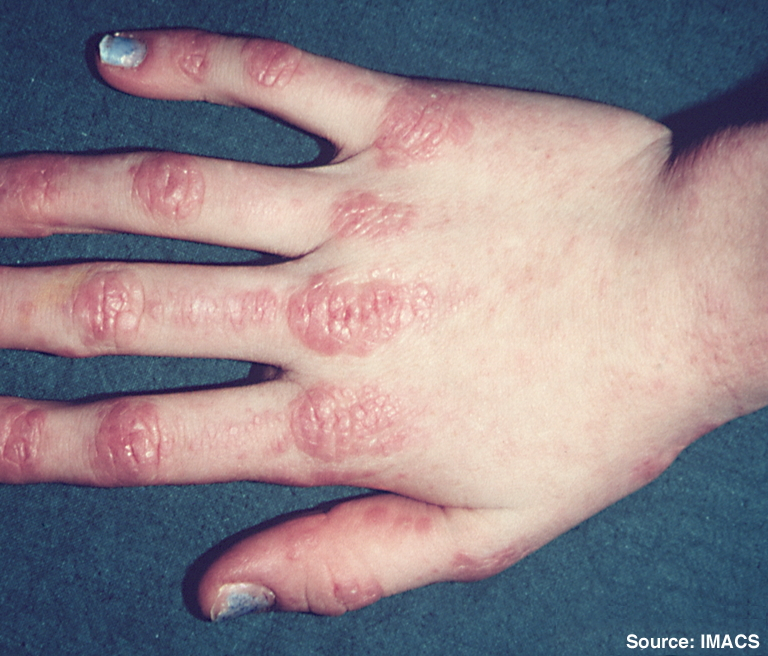Safety of rituximab in the routine treatment of rheumatoid arthritis in Italy in patients refractory to anti-TNFa drugs: results from the observational retrospective-prospective RUBINO study

Published: November 6 2014
Abstract Views: 2283
PDF: 1538
Publisher's note
All claims expressed in this article are solely those of the authors and do not necessarily represent those of their affiliated organizations, or those of the publisher, the editors and the reviewers. Any product that may be evaluated in this article or claim that may be made by its manufacturer is not guaranteed or endorsed by the publisher.
All claims expressed in this article are solely those of the authors and do not necessarily represent those of their affiliated organizations, or those of the publisher, the editors and the reviewers. Any product that may be evaluated in this article or claim that may be made by its manufacturer is not guaranteed or endorsed by the publisher.
Similar Articles
- D. Oliveira, A. Martins, F. Martins, C. Gomes, S. Pimenta, C. Vaz, L. Costa, M. Bernardes, Systemic lupus erythematosus induced by anti-tumor necrosis factor α therapy in inflammatory rheumatic diseases: a case series , Reumatismo: Vol. 76 No. 4 (2024)
- G. La Montagna, R. Tirri, R. Vitiello, D. Malesci, R. Buono, G. Mennillo, G. Valentini, Safety of methotrexate in rheumatoid arthritis: a retrospective cohort study in clinical practice , Reumatismo: Vol. 58 No. 4 (2006)
- M. Cutolo, IL-1Ra: its role in rheumatoid arthritis , Reumatismo: Vol. 56 No. s1 (2004)
- L. Quartuccio, S. Salvin, M. Saracco, S. Lombardi, M. Fabris, E. Mansutti, M. Maset, S. Pellerito, S. De Vita, Rheumatoid factor positivity rather than anti-CCP positivity, a lower disability and a lower number of anti-TNFα agents failed are associated with response to rituximab in rheumatoid arthritis , Reumatismo: Vol. 61 No. 3 (2009)
- C. Botsios, P. Sfriso, A. Furlan, P. Ostuni, M. Biscaro, U. Fiocco, S. Todesco, L. Punzi, Anakinra, a recombinant human IL-1 receptor antagonist, in clinical practice. Outcome in 60 patients with severe rheumatoid arthritis , Reumatismo: Vol. 59 No. 1 (2007)
- V. Bruzzese, J. Pepe, Unexpected and persistent depletion of B lymphocytes CD20 following a minimum dose of anti-CD20 antibody (Rituximab) , Reumatismo: Vol. 61 No. 4 (2009)
- F. Schiavon, M. Favero, V. Carraro, L. Riato, Septic arthritis: what is the role for the rheumatologist? , Reumatismo: Vol. 60 No. 1 (2008)
- G. Pasero, P. Marson, B. Gatto, A short history of anti-rheumatic therapy - VII. Biological agents , Reumatismo: Vol. 63 No. 3 (2011)
- M. Covelli, P. Sarzi-Puttini, F. Atzeni, P. Macchioni, Safety of rituximab in rheumatoid arthritis , Reumatismo: Vol. 62 No. 2 (2010)
- M. Fabris, L. Quartuccio, S. Lombardi, M. Benucci, M. Manfredi, M. Saracco, F. Atzeni, P. Morassi, M.A. Cimmino, E. Pontarini, C. Fabro, R. Pellerito, P. Sarzi-Puttini, M. Cutolo, A. Carletto, L.M. Bambara, F. Fischetti, F. Curcio, E. Tonutti, S. De VIta, Study on the possible role of the -174G>C IL-6 promoter polymorphism in predicting response to rituximab in rheumatoid arthritis , Reumatismo: Vol. 62 No. 4 (2010)
1-10 of 531
Next
You may also start an advanced similarity search for this article.












